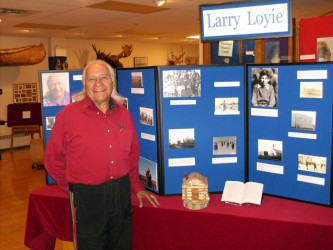Article Origin
Volume
Issue
Year
A new book documents first-hand experiences of Indian residential schools to youth and adult readers through both words and photographs.
Residential Schools, With the Words and Images of Survivors is by Cree writer Larry Loyie. Loyie, who now lives in Edmonton, is himself a survivor of St. Bernard Mission residential school in Grouard, in northern Alberta. He began researching the national history of residential schools in 1993 with his partner writer/editor Constance Brissenden, travelling for over a decade interviewing more than 200 survivors and collecting personal photographs. The research continued through to the completion of the Truth and Reconciliation Commission gatherings in March of 2014 in Edmonton.
It has been Loyie’s goal to document the residential school system experience. He first wrote a play, Ora Pro Nobis, Pray for Us, followed by a children’s book called As Long as the Rivers Flow in 2002, which won several major awards and served as a subject opener for Loyie’s classroom visits. Goodbye Buffalo Bay, from 2008, is the sequel and is about his last year of residential school and moving on at age 14.
Residential Schools is aimed at all age of readers.
“We created an expansive picture of what life in residential school was like,” said Loyie. “Teachers can only get bits and pieces of the story from the internet. There’s a lot of material out there but nothing in one place, from trustworthy sources. Now teachers, students, all readers, can find an overview in one place, from the perspective of survivors.”
Beautifully designed with a large number of photographs, the book covers residential school history, from how the schools started to how they continued and finally how they ended.
“It follows students through their routines, the limited classroom time and daily chores, like piling wood to heat the buildings, cooking meals, and cleaning up,” Loyie said. “We quote from more than 45 survivors or their family members to support the text.”
Loyie collaborated with Brissenden as well as writer Wayne K. Spear, who is Mohawk. Spear was communications director of the Aboriginal Healing Foundation and focused on what happened after April 1, 1969, when the system officially ended and the schools began to close.
Most of all, Loyie hopes the book will keep the stories of survivors alive.
“Revealing the past has been painful for many, myself included,” he said. “Yet we know we need to do it. The hidden history of residential schools must be known to ensure the future human rights of all Canadian children. Residential schools no longer exist but we must not forget them.”
Residential Schools, With the Words and Images of Survivors is co-published by Shingwauk Residential Schools Centre and Indigenous Education Press.
- 1357 views

